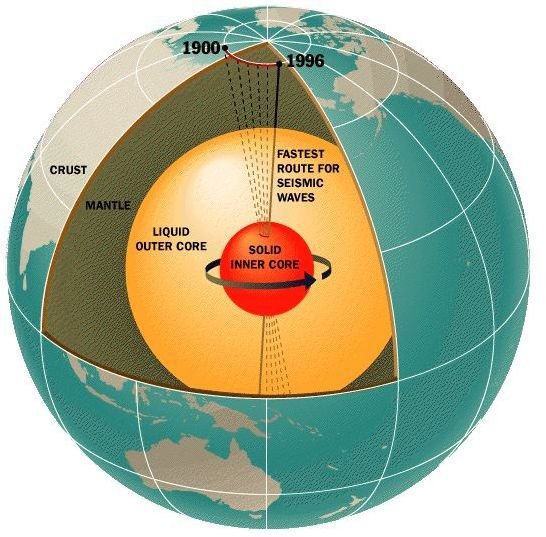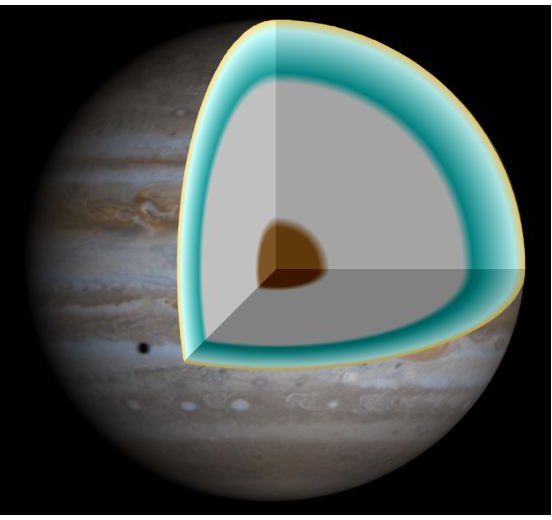What are Super-Earths and Can They Sustain Life?
What is a Super-Earth?
For many years, the only planets astronomers could find outside of our solar system were huge, gaseous entities, such as our own Jupiter. Advances in observation technology, though, have allowed scientists to discover a smaller type of planet they’ve dubbed a super-Earth. Scientists generally define a super-Earth as a planet that is up to about 10 times the mass of Earth. According to Steve Edberg, of NASA’s Jet Propulsion Laboratory, planets any larger than that tend to be gaseous, like Uranus and Neptune (Rodriguez).
It’s important to understand that the term super-Earth technically refers only to the mass of the planet, and not its temperature, climate, or environment; however, super-Earths are of interest to scientists because the smaller planets tend to have surfaces which would be more likely to support life as we know it, such as with liquid oceans and rocky terrain.
The image below illustrates a model of Jupiter’s interior. In the outer layers the atmosphere transitions to a liquid state above a thick layer of metallic hydrogen. In the center there is likely a solid core of heavier elements.
Image credit: Wikimedia Commons. https://commons.wikimedia.org/wiki/File:Jupiter_interior.png.
The image below illustrates a model of Earth’s interior, with a thick mantle beneath the outer curst.
Image credit: Wikimedia Commons. https://commons.wikimedia.org/wiki/File:NASA_54558main_world_med1.gif.

Discovering Super-Earths
Extra-solar planets have been of interest to scientists since the 19th century. Many astronomers felt that such planets existed, but they had no way of proving their existence. The first super-Earth was discovered in 1991 by Aleksander Wolszczan and Dale Frail around the pulsar PSR B1257+12. The first super-Earth around a main sequence star was discovered by Eugenio Rivera in 2005 orbiting Gliese 876. In 2006 OGLE-2005-BLG-390Lb and HD 69830 were discovered, with masses of 5.5 and 10 times that of Earth, respectively. Mostly because of surface temperatures, none of these planets would be habitable to humans. (“Super Earths”).
In April 2007, Stephane Udry’s Swiss team announced the discovery of two super-Earths around Gliese 581, on either edge of the habitable zone, at average temperatures of -3 degrees Celsius (26.6 F) and 40 degrees Celsius (104.0 F). Both are around 5 Earth masses.
In June of 2008, astrophysicist David Bennett reported the discovery of the smallest super-Earth yet, MOA-2007-BLG-192Lb, at approximately 3.3 Earth masses. And in the same month, European researchers reported finding three super-Earths around the star HD40307 (at 4.2, 6.7, and 9.4 Earth masses) and another around HD181433 at 7.5 Earth masses.
With the aid of satellites like ESA’s, COROT mission and NASA’s newly launched, Kepler mission, the rate of discovery of earth-like planets should grow tremendously.
Life on Super-Earths?
So the question remains, is it possible to sustain life on these super-Earths? Some scientists say “maybe,” others say “not likely.” Everyone seems to agree, though, that the increasing discovery of Super-Earths is exciting. According to an MSN news article from May 2008r, projections based on recent detections of much smaller worlds suggest that lightweight, rocky planets will eventually be found to outnumber extra-solar gas giants. This certainly means that the discussion about super-Earths and what exactly constitutes a “life-sustaining” environment will continue to top the chart of water-cooler discussions for astrophysicists around the globe in the coming years.
References
Rodriguez, Joshua. “Unraveling the Mystery and Potential of ‘Super Earths.” Planet Quest. Feb. 12, 2009. https://planetquest.jpl.nasa.gov/news/superEarths.cfm
“Super Earths.” Wikipedia. https://en.wikipedia.org/wiki/Super-Earth
